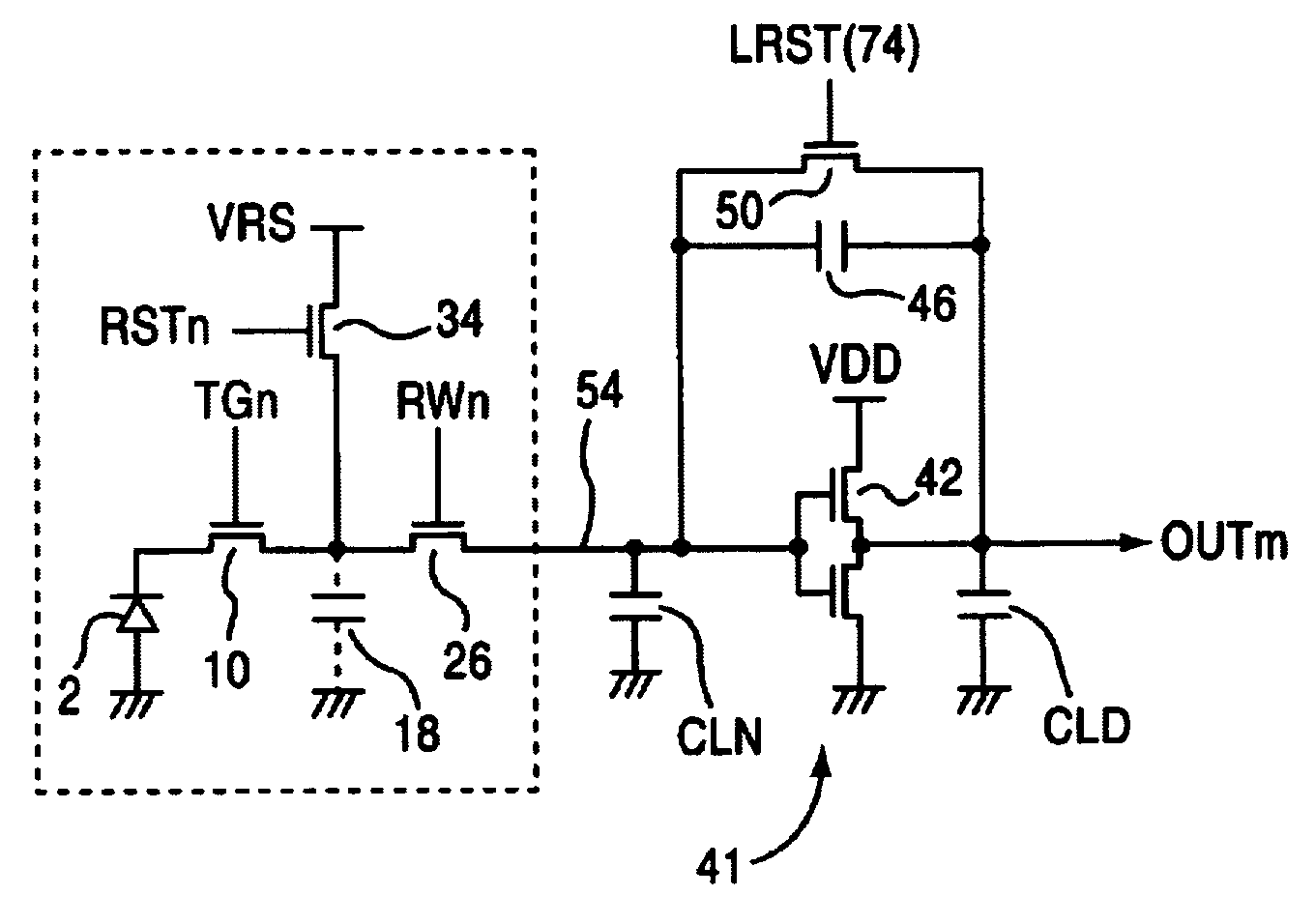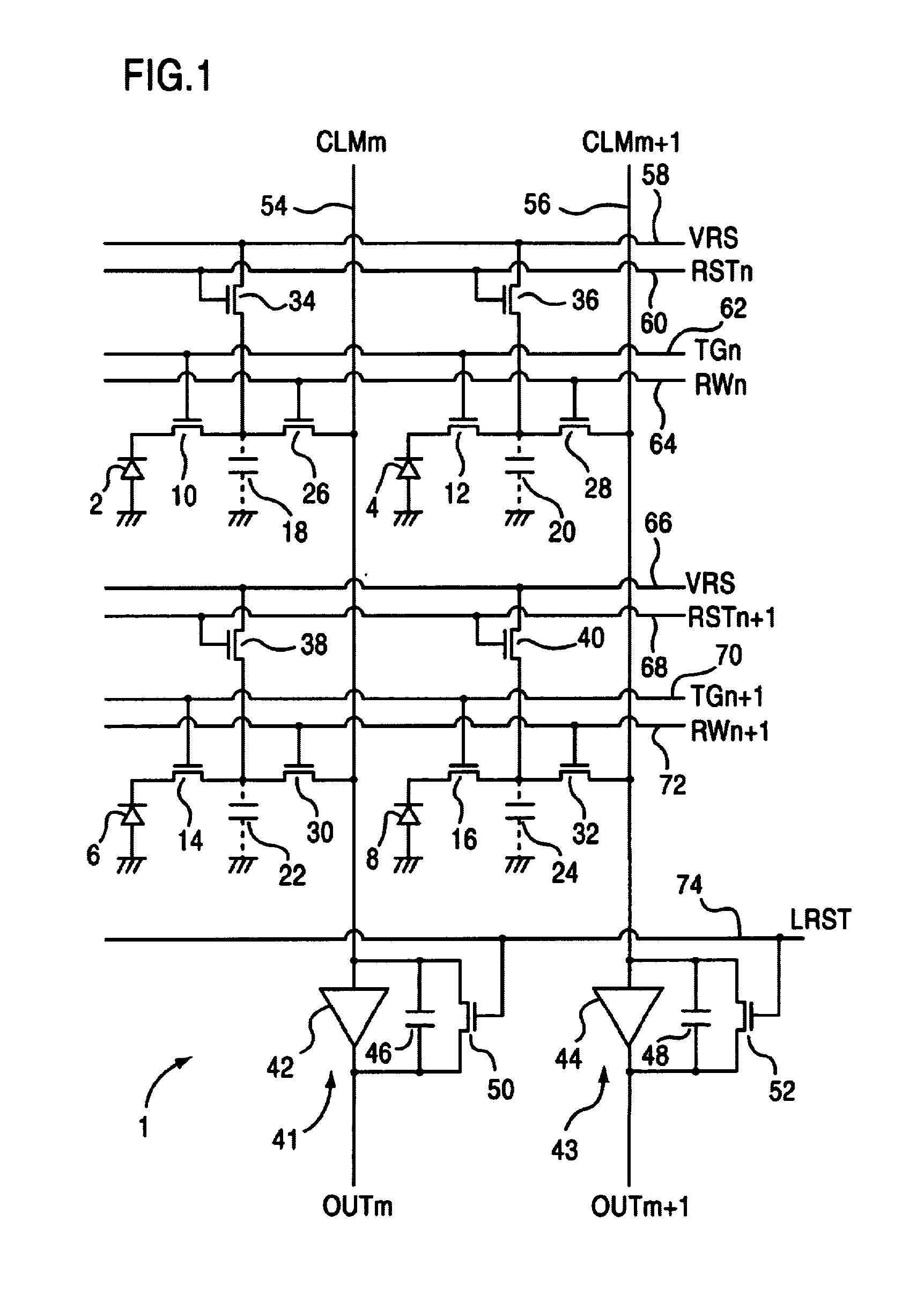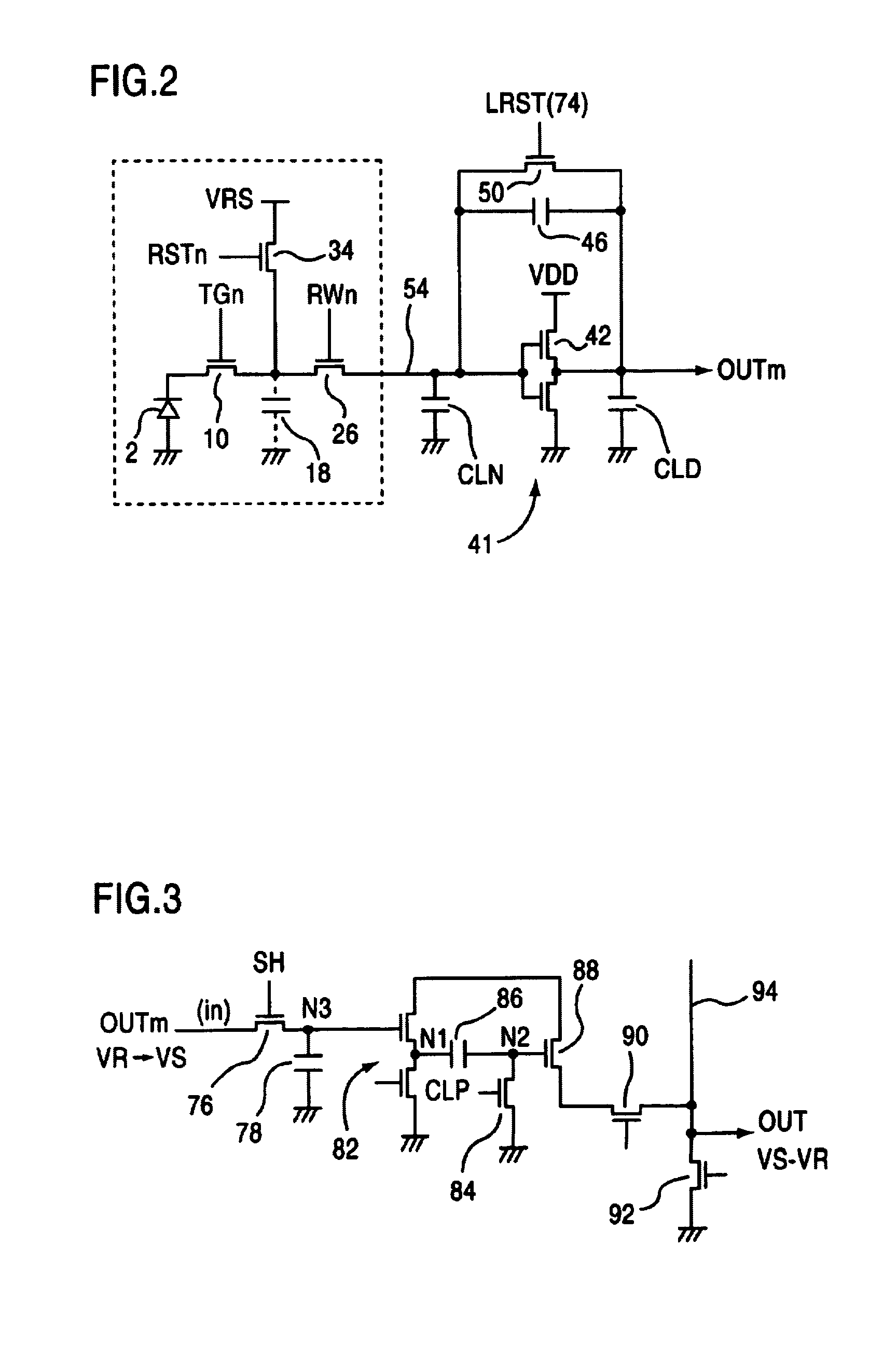Solid-state imaging device with the elimination of thermal noise
a solid-state imaging and thermal noise technology, applied in the direction of radioation control devices, television system scanning details, television systems, etc., can solve the problems of thermal noise picture quality deterioration, etc., and achieve the effect of reducing the effect of thermal nois
- Summary
- Abstract
- Description
- Claims
- Application Information
AI Technical Summary
Benefits of technology
Problems solved by technology
Method used
Image
Examples
first embodiment
[0036]A solid-state imaging device according to the present invention will be explained by using FIG. 1 through FIG. 6. First, a simplified constitution of a solid-state imaging device according to the embodiment will be explained using FIG. 1.
[0037]FIG. 1 shows a circuit example of an XY address-type image sensor 1 corresponding to 2×2 pixels in a solid-state imaging device of the embodiment. MOSFET transfer gates (TG) 10, 12, 14, 16 are connected, respectively, to the cathode sides of photodiodes 2, 4, 6, 8 of the light-sensitive portions of each pixel. Furthermore, photodiode 2 in the light-sensitive portion can be constituted from a photogate. Source junction capacitors of the floating diffusion (FD) region of between transfer gates 10, 12, 14, 16 and MOSFET horizontal selection switches 26, 28, 30, 32 are used as detection capacitors 18, 20, 22, 24. The gate electrodes of transfer gates 10, 12 are connected to transfer gate control line 62, and the gate electrodes of transfer g...
second embodiment
[0082]As a characteristic of the second embodiment, there provides a reset gate 11 for removing a charge stored in the well of photodiode 2. Moreover, when this reset gate 11 is ON, the electron well of photodiode 2 is completely depleted, and is reset to an absolute level determined by the doping concentration and depth of low-concentration n region 113. Therefore, thermal noise is not contained therein. And by controlling the timing at which reset pulse Rn is applied, it is possible to achieve either an electron shutter function, or a exposure control function.
[0083]FIG. 12 is a diagram showing a variation of the second embodiment. As shown in the cross-sectional view of FIG. 12A, the P-type well region 111 of the central portion is formed deeply, and a low-concentration n region 113, which forms a photodiode 2, is formed therein. Therefore, there is no blooming suppressing function that uses a shallow P-type well region 111A as shown in FIG. 10A. In place thereof, in the example ...
PUM
 Login to View More
Login to View More Abstract
Description
Claims
Application Information
 Login to View More
Login to View More - R&D
- Intellectual Property
- Life Sciences
- Materials
- Tech Scout
- Unparalleled Data Quality
- Higher Quality Content
- 60% Fewer Hallucinations
Browse by: Latest US Patents, China's latest patents, Technical Efficacy Thesaurus, Application Domain, Technology Topic, Popular Technical Reports.
© 2025 PatSnap. All rights reserved.Legal|Privacy policy|Modern Slavery Act Transparency Statement|Sitemap|About US| Contact US: help@patsnap.com



